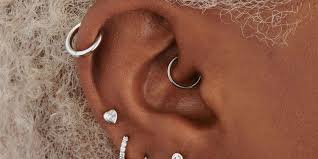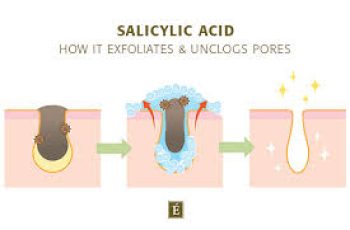
Do You Have Dry Skin Behind Your Ears? Dermatologist Reveals 10 Treatment Options
You may care a lot about your face, but have you thought about your ears, too? According to dermatologist Dr. Geeta Yadav, the skin on your ears is one of the most neglected areas of skin on the body, which can lead to dryness, irritation, and/or unwanted flaking. However, neglect is just one of many causes of dry skin behind the ears, as age, environment, skin type, or chronic skin conditions like psoriasis or eczema can also cause flaking. We spoke with Dr. Yadav and double-board certified dermatologist Karan Lal DO about how to prevent and treat dry patches behind the ears. Read on to learn about the causes, possible remedies, and when you should see a professional.
Causes of Dry Skin Behind the Ears
“The ears are rarely moisturized and even less often cleaned,” says Dr. Yadav. “Dryness behind the ears is a relatively common occurrence. It’s usually caused by common causes.” She mentions fluctuations in temperature or humidity, sunburn, or eczema. ” In other cases, it could be a sign of an allergy or even a fungal infection.
If you have sudden dryness behind your ears and you’re not sure why, consider factors like weather, your recent activity, or changes in the skin and hair products you’ve been using to determine the cause.
When to see a professional
In general, you should see a dermatologist regularly to have your skin checked. If you notice anything unusual or if irritation persists, discuss it at your next appointment, or consider calling for advice or rescheduling an earlier appointment if necessary. However, not all dry patches need to be treated with medication. In many cases, you can try home remedies first (see below for a few options), as dryness behind the ears is often caused by seasonal changes or neglecting to care for the area. If DIY If the method doesn’t seem to be working, make an appointment.
The main cause of dry patches behind the ears is infection. If you notice that the skin is infected or inflamed, contact your doctor immediately. This happens when dry skin is scratched or broken, allowing unwanted bacteria to enter. If you are not sure if the area is infected, it is better to be safe than sorry. When in doubt, we recommend seeking help from your doctor.
How to Treat Dry Skin Behind the Ears
Gentle Cleansing
If you suffer from xerosis and don’t typically include your ears in your skincare routine, cleaning your ears with a gentle, moisturizing formula may be a good place to start. Dr. Lal emphasizes the importance of using a gentle cleanser on the tops of your ears. “Properly cleaning the area helps prevent an overgrowth of bacteria and yeast,” he says. This helps prevent dry patches from forming.
Exfoliate Regularly
After cleansing, the natural next step in keeping the skin behind your ears (or anywhere on your face and body) in check is to exfoliate. The skin around your ears is delicate, so vigorous exfoliation isn’t necessary. If the area is particularly delicate, Dr. Yadav gently wipes behind the ears with a damp washcloth to remove loose and flaking skin: “This allows you to effectively moisturize and nourish the new skin underneath, preventing future dryness, rather than treating dead skin that’s already flaking.” ”
Apply a Moisturizer
After thoroughly cleansing the area, Dr. Yadav applies a small pump of moisturizer. She likes Cetaphil Daily Facial Moisturizing Lotion SPF 35 (which has a lightweight texture and supports the skin barrier) or CeraVe AM Facial Moisturizing Lotion SPF 30 (rich with soothing niacinamide and hydrating hyaluronic acid).
Apply an Occlusive
Both Dr. Lal and Dr. Yadav told us that using an occlusive (like Aquaphor’s Healing Ointment) after moisturizer is the best way to lock in nutrients. “This keeps the skin behind the ear super hydrated,” says Dr. Yadav. “If you have long hair, this can be a little messy, so I recommend using this technique at night while your hair is tied up in a topknot.” ”
If you prefer natural herbal remedies, you can also opt for those. “A small amount of coconut oil can provide the same long-lasting nourishing and moisturizing benefits, and it tastes delicious,” Dr. Yadav told us.
Use hydrocortisone cream
Both Dr. Yadav and Dr. Lal recommend incorporating hydrocortisone cream into your daily routine. “If the dry skin behind your ears is very sensitive, itchy, and irritated, use a hydrocortisone cream,” Dr. Yadav tells us. This mixture of a topical anesthetic and a corticosteroid can soothe any discomfort you’re feeling. She also notes that these formulas often have an occlusive base that provides long-lasting protection from dryness.
Avoid potentially irritating products
Even if your ears don’t have their own skin-care routine, they’re probably exposed to more products than you think. Products like shampoo, cologne, or sprays can irritate the skin on your ears, especially sensitive ones. For this reason, Dr. Lal says, avoid irritants altogether. Instead, look for gentler shampoos and conditioners, and be mindful of the amount of perfume and other products you use.
Wear jewelry that’s meant for sensitive skin
Jewelry is another potential irritant for the skin behind your ears. Not all metals are created equal, so look for jewelry made from 100% Jewelry made of titanium or precious metals like gold or sterling silver to avoid irritation.
Cover your ears
If you live in an area with cold weather, always bring a hat with you, as particularly cool temperatures can exacerbate cracked or broken skin. Bonus points if your hat is made of a skin-friendly material like cotton or linen.
Use a humidifier
According to the Cleveland Clinic, using a humidifier can moisten the air and help relieve conditions like dry skin and eczema. 1
See a dermatologist
This step is last on the list for good reason. Generally, this shouldn’t be your first step in treating dry skin behind your ears, but if the above steps don’t solve your problem or you have other worrisome symptoms, you should consult your doctor for advice.


